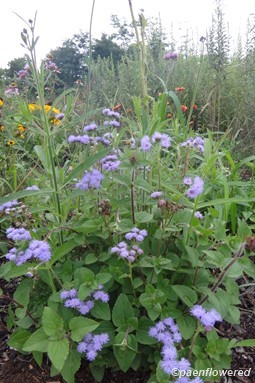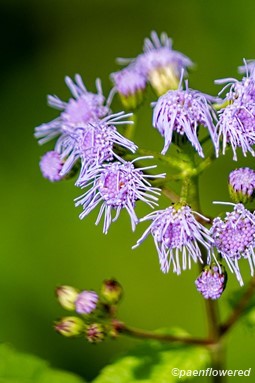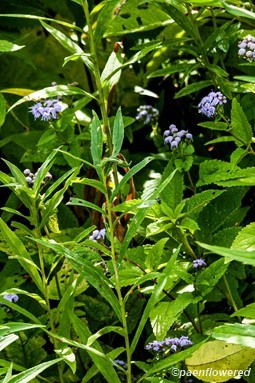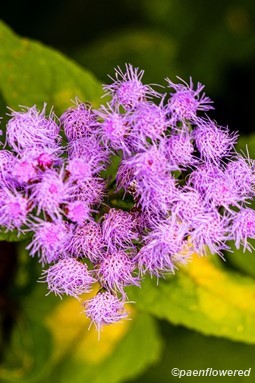Conoclinium coelestinum
A delicate perennial with blue florets
Conoclinium coelestinum blue mistflower
Add to MyPlants View Locations
This North American native perennial wildflower of the aster family was previously classified in the genus Eupatorium, but recent DNA studies have led to its placement in a different genus. It is characterized by flat-topped clusters of fuzzy blue to violet composite flowers. There are only disk flowers - no ray flowers. Each flower head has about 40-50 of these disk florets. Each flower cluster is about 1-3 inches wide. There is no scent.
The leaves are paired and triangular-shaped and have blunt-toothed margins. The stem branches only at the top to form clusters of flowers. The leaves are heavily veined.
The plant grows 1-2 feet tall in thickets, clearings, stream banks and sandy wood edges. It does best in moist to wet soils, but tolerates other soils. The bloom time is August to October. Bees and butterflies serve as pollinators. This species is widely cultivated as a garden plant, but has a tendency to take over a garden.
Blue mistflower has an extensive native range in the south and midwest of the United States, but is only found in the southwest corner of western Pennsylvania, notably in Butler, Allegheny, Westmoreland, Washington, Green and Fayette counties. It also grows in the southeastern part of the state. It may show up as a garden escapee outside of its native range. Plants with similar but white flowers are probably boneset, white snakeroot or late-flowering thoroughwort. Joe-Pye-weed may have flowers of similar color but these are generally much larger plants.
Habitat & Range
Rare in old fields, meadows and stream banks.
Mostly found in the south of the state.
| EMP: | FAC |
|---|---|
| NCNE: | FAC |
Phenology
Flowers August to October.
Plant Codes
S-rank: S4 (Apparently Secure)
G-rank: G5 (Secure)
Conoclinium coelestinum blue mistflower
Synonyms: Eupatorium coelestinumAdd to MyPlants View Locations







Comments
Have you spotted this plant in your area? We'd love to hear about your experience! Share your comments or questions about the plant below. Comments are moderated before posting.